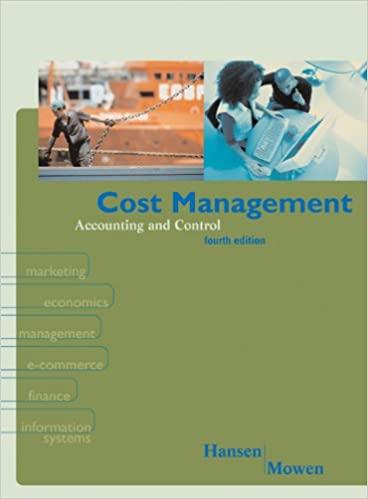Question
Begin this section by writing out the expanded accounting equation. Then, diagram the following transactions first in the tabular form, and then illustrating the impact
Begin this section by writing out the expanded accounting equation. Then, diagram the following transactions first in the tabular form, and then illustrating the impact on affected T Accounts. Explain why you have recorded the amounts as you did. The first transaction has been done for you as an example:
| A Sarah has written a check to purchase some supplies from a vendor. |
| Assets = Liabilities + Capital + Revenue Expenses |
| -$300 + $300 = $0 + $0 + $0 - $0 |
| The asset account called Business Checking Bank Account is reduced by the amount of the check, and the asset account called Supplies is increased. |
| B - Sarah has completed a copy job for a customer for $2,500. The terms of service indicate the customer should make payment within 15 days.
|
| Assets = Liabilities + Capital + Revenue Expenses |
|
|
|
|
|
|
| C - 10 days later, the Sarah received the full payment in the mail.
|
| Assets = Liabilities + Capital + Revenue Expenses |
|
|
|
|
|
|
| D - Sarah has written a check for $150 to pay the balance due to one of the company vendors for supplies previously purchased. |
| Assets = Liabilities + Capital + Revenue Expenses |
| 150=0+0+0-150 |
|
|
|
|
In part d of #5 above, what type of transaction will you enter in QBO? If you were using a manual accounting system to record this transaction, how would this process be different? What are all of the necessary steps in a manual accounting system? Which accounting system (automated or manual) is easier for recording all of the impacts of this transaction and why?
Step by Step Solution
There are 3 Steps involved in it
Step: 1

Get Instant Access to Expert-Tailored Solutions
See step-by-step solutions with expert insights and AI powered tools for academic success
Step: 2

Step: 3

Ace Your Homework with AI
Get the answers you need in no time with our AI-driven, step-by-step assistance
Get Started


